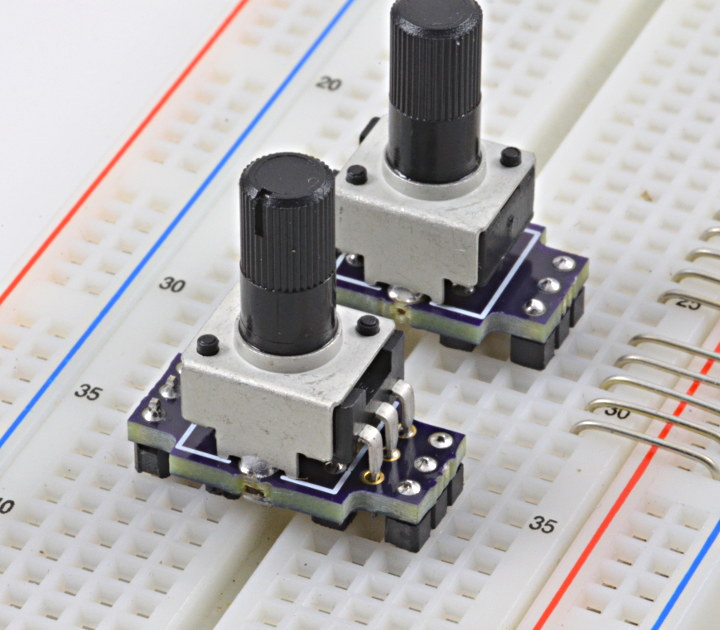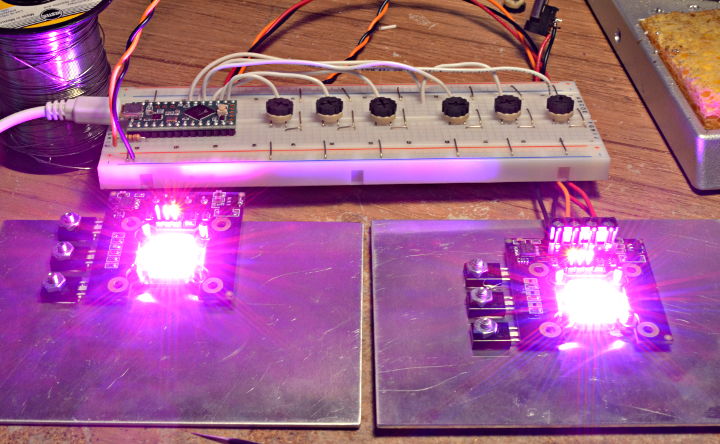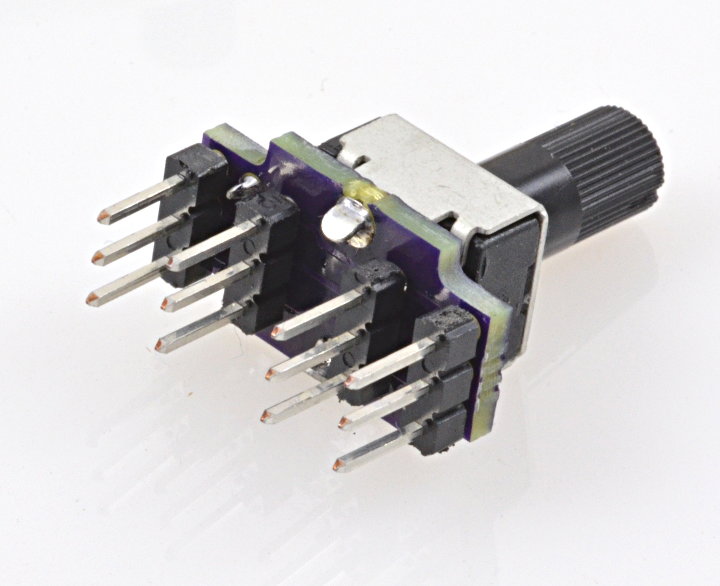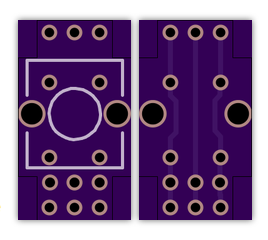Often I make a quick demo involving pots to adjust parameters. I needed a good way to put pots on solderless breadboards.

I had been doing this way:

These little thumbwheel pots work, but they’re not easy to turn, and trying to turn them puts quite a bit of stress on the loose breadboard connections. They’re also too low to the surface, so people’s fingers get close to the wires and risk disconnecting them.
Socially, I’ve observed people tend to feel awkward touching these… maybe they don’t want to break my project? Or maybe it’s just not clear if they’re supposed to be touched and adjusted?
With knobs on top of the pots, a last-minute project really looks like something you’re supposed to touch!
The ones in this video are actually the first version I made, with only 6 header pins. Those worked, but they still weren’t as strong as I wanted.
My latest version adds another pair of pins. It’s *really* strong and secure when plugged into a breadboard.

The PCB is so very simple.

They can be ordered from OSH Park, if you’d like to have some for your next breadboard-based demo.
The pot used on these photos is Digikey # PTV09A-4020U-B103-ND. This is a very standard pinout for 6mm shaft pots, so many others are likely to work fine.
The colored knobs were ordered from a no-name Chinese merchant on Ebay. Searching on Ebay for “knob 6mm shaft” will bring up *lots* of them. These gray ones with colored tops were 10 piece for $1, with free shipping. The ones I got didn’t actually fit the 6mm shaft until I ran a drill bit into the center, but it’s hard to complain when they’re so incredibly cheap.
Best of all, real knobs with bright colors and sturdy construction really invite people to touch and adjust and play with a breadboard constructed demo, in fun ways that just aren’t socially feasible with trim pots!
This article was originally published on the DorkbotPDX website, on August 14, 2015. In late 2018, DorkbotPDX removed its blog section. An archive of the original article is still available on the Internet Archive. I am republishing this article here, so anyone wanting to make these sturdy pot boards can find the original info.